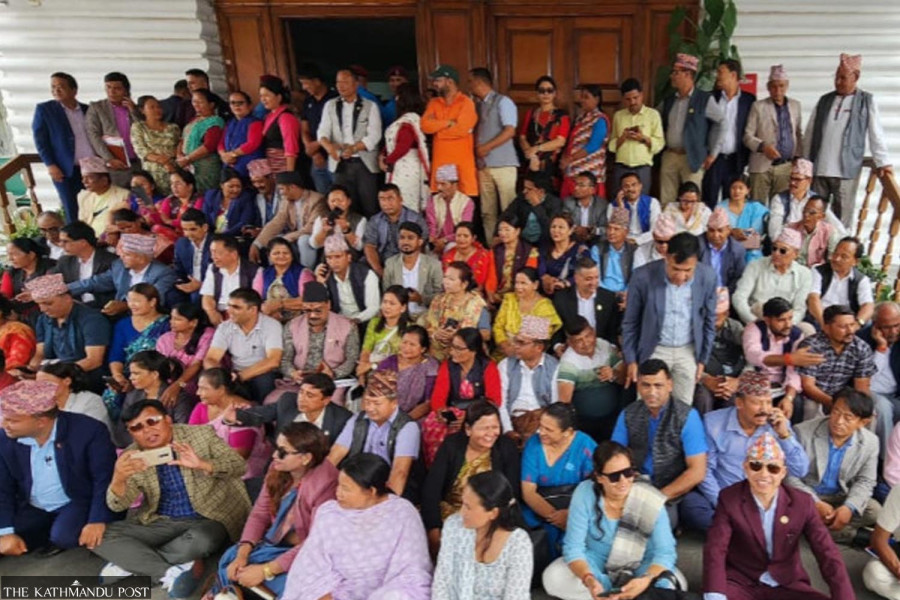Editorial
Give, don’t take
When devolution of power and resources is the need of the hour, cutting the budget for local units is regressive.
Chiefs and deputy chiefs of over 150 local units from across the country have gathered in Kathmandu for a common agenda—to protest against the federal government’s decision to cut the budget already allocated to them. They picketed the finance ministry at Singha Durbar on Sunday to mount pressure on the federal government to release the money. According to them, the budget earmarked under the title of equalisation grants was not distributed as earlier promised. Local units get the equalisation grants in three tranches. They were entitled to 25 percent of the total grants in the third instalment, but they got only seven percent.
According to elected local representatives, the federal administration’s act of cutting the allocated budget has caused them multiple problems as they had initiated several development projects and other activities with a plan to pay with the money from the equalisation grants. With the abrupt disruption of the source, they are now in a spot of bother.
The finance ministry might have its own arguments behind stopping the budget, most likely a shortfall of resources as successive governments have failed to rejuvenate the country’s economy after the covid pandemic. The Pushpa Kamal Dahal government has been a failure on the economic front as it couldn’t even meet the target of revenue collection set in the annual budget. Nepali authorities have failed to apply any innovative idea or explore new resources to fill the gap. The authorities in Kathmandu could have found other ways such as applying austerity measures at the centre so as to avoid budget cuts to the local units. For one, cutting local units’ budgets won’t help the government’s goal of increasing capital expenditures.
There are several options to fund development and other activities at the district, constituency and local levels. Allocation of the budget through equalisation grants is one. It is a more scientific and rational way of resource distribution as it is done in line with clear working procedures of the National Natural Resources and Finance Commission. The latest status of human development indicators including the situation of education, health and drinking water of a particular local unit or province; the situation of balanced development there; that of disparity based on economic, social or any other discrimination; the condition of infrastructure in the province and local units; the existing status and prospect of revenue generation; and the need of expenditure for the sub-national units are the criteria considered while allocating funds.
The commission also takes the population of a sub-national unit as a basis to allocate budget under this category. For instance, units with less than 10,000 people get Rs1.25 million while those with more than 10,000 and upto 2 million people get additional Rs125,000 for each 10,000 increment. This shows that distribution of money under equalisation grants is to an extent rational whereas several other programmes are infamous for doling out money based on recommendation and influence of powerful political leaders and top officials at Singha Durbar.
By cutting resources to local units, the government is treading a regressive path by weakening sub-national administrations—at a time it needs to devolve more authorities and resources to strengthen them as per the spirit of the federal system. The local representatives, while speaking during the sit-in at the ministry, accused the authorities of shifting development and other responsibilities to the local units while centralising resources at Singha Durbar. They are right to say that such a tendency will neither strengthen the federal system nor does it sit well with the spirit of the new constitution.




 12.88°C Kathmandu
12.88°C Kathmandu














